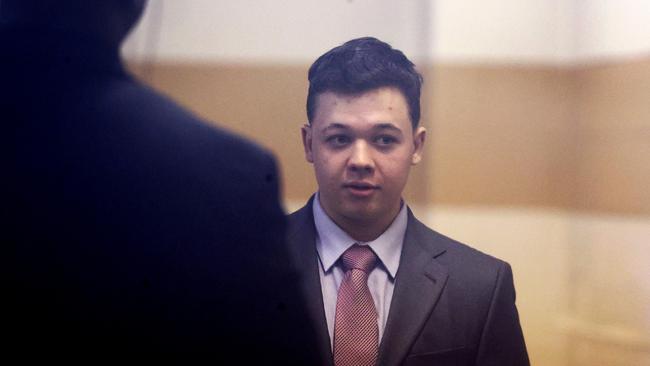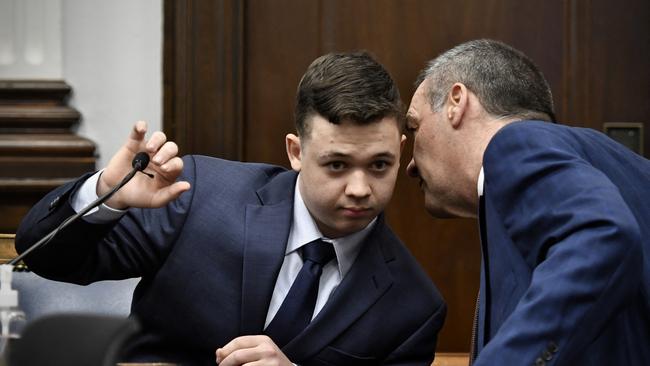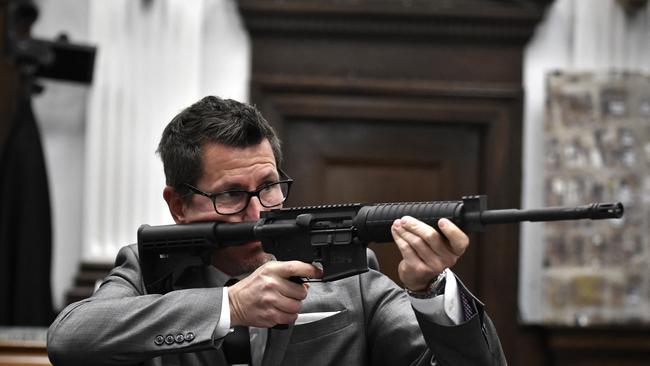Experts weigh in on prosecution’s failed strategies in Kyle Rittenhouse trial
Legal experts have given their opinions on Kyle Rittenhouse’s trial after the teen was controversially acquitted of murder charges.

News
Don't miss out on the headlines from News. Followed categories will be added to My News.
Prosecutors in the Kyle Rittenhouse homicide trial presented an overly complex case, and might have had better success if they sought a lesser charge, legal experts told The New York Post, in the aftermath of the teen’s acquittal.
Rittenhouse, 18, was found not guilty of all counts in a string of shootings during last year’s anti-police brutality protests in Kenosha, Wisconsin that left two men dead and a third injured.
Lou Shapiro, a state and federal criminal defence lawyer in Los Angeles, said the prosecution “overshot” its case when it presented the argument that Rittenhouse “brought a gun to a fistfight”.
“They oversold the case because the prosecution was stuck on this theory that Rittenhouse was this guy out to kill,” Mr Shapiro said. “If you can’t get that out of your mind as a prosecutor, you’re not gonna be able to offer lesser charges because that does not fit that narrative. They oversold and it backfired.”
After deliberating for nearly three and a half days, the jury cleared Rittenhouse of homicide, attempted homicide and reckless endangerment in the deaths of Joseph Rosenbaum, 36, and Anthony Huber, 26, and the wounding of Gaige Grosskreutz, 27, on August 25, 2020.
He was 17 when he brought a semiautomatic rifle and a medical kit to Kenosha in what he said was an effort to protect businesses as riots broke over the police shooting of Jacob Blake, a black man who was left paralysed from the waist down.
Rittenhouse, who argued self-defence, had been facing life in prison if found guilty on the most serious charge of first-degree intentional homicide in Mr Huber’s death.
Stream more US news live & on demand with Flash, Australia’s biggest news streaming service. New customers try 14 days free >

John Gross, an associate professor of law at the University of Wisconsin and the director of the Public Defender Project, said the decision not to slap Rittenhouse with the lesser charge of second-degree intentional homicide made this case an uphill battle from the start.
“Under Wisconsin law, when a defendant raises the issue of self-defence, the prosecution is required to prove beyond a reasonable doubt that the defendant did not act in self-defence,” Prof Gross said. “Wisconsin has a mitigating circumstance called unnecessary defensive force, and that reduces first-degree intentional homicide to second-degree intentional homicide.
“I think the prosecution could have just charged that second-degree homicide with the mitigating factor that he thought he was entitled to use self-defence, but that his use of force was unreasonable,” he continued. “Ultimately, that was the prosecution’s burden and they could not meet that burden.”
Both Shapiro and Prof Gross credited the defence for using video evidence to paint the demonstrations on that night as chaotic. Gross said the evidence showed “people were setting things on fire” and damaging property.

“There was the potential for violence from all sorts of people who were out in the street with guns, chains and other weapons and so, in that chaotic environment, does it become reasonable for Mr. Rittenhouse — when he’s being confronted by people, when he’s being chased by people– to think that he could suffer serious bodily harm and is he then entitled to use deadly force and self-defence?” Prof Gross said.
“I think through the videos and how they portrayed the environment that evening, jurors could easily see that this was a tense, rapidly evolving situation where there was the potential for violence from multiple sources.
“I think it was just too strong of a case for the defence to make based on the facts to ever overcome that burden.”
Mr Shapiro said the prosecution also had difficulty with presenting the victims as sympathetic amid the violence that transpired that night.
“The jurors live there … and if you’re hearing sirens, you’re looking outside your house, you see fires and explosions and gunshots, it is scary,” Mr Shapiro said. “There was no disputing that these people were a part of that. They were not sympathetic victims and the prosecution did not do a good job of cleaning that up, as we can see by the verdict.”
Prof Gross said having an 18-year-old testify was a bit of a risk, but one that proved beneficial in this case.
“From the start of this trial, we were waiting for some new piece of evidence, something else for the prosecution to put in front of the jury, that would signal that they could disprove Rittenhouse’s claim that he acted in self-defence, but it never materialised,” Prof Gross said.
“They continued to just toe the line in presenting their evidence and ultimately at the end of the day, the prosecution couldn’t overcome that argument that he was entitled to use self-defence or at least the prosecution couldn’t convince them that he wasn’t.”
This article was originally published by the New York Post and reproduced with permission
More Coverage
Originally published as Experts weigh in on prosecution’s failed strategies in Kyle Rittenhouse trial




